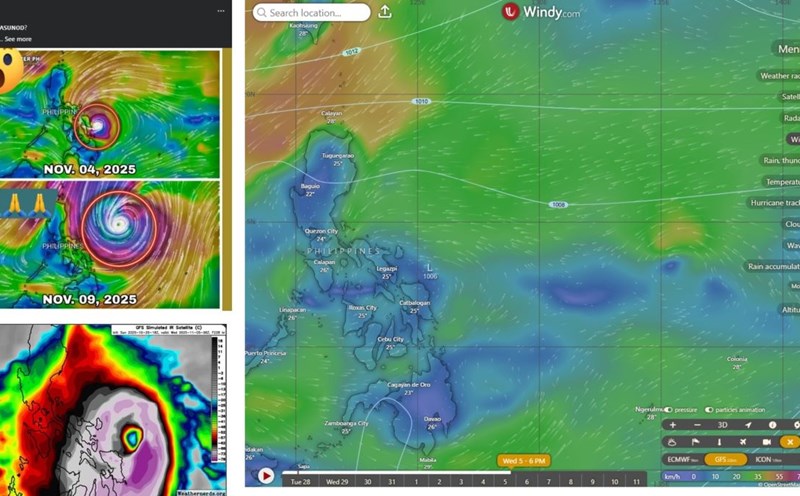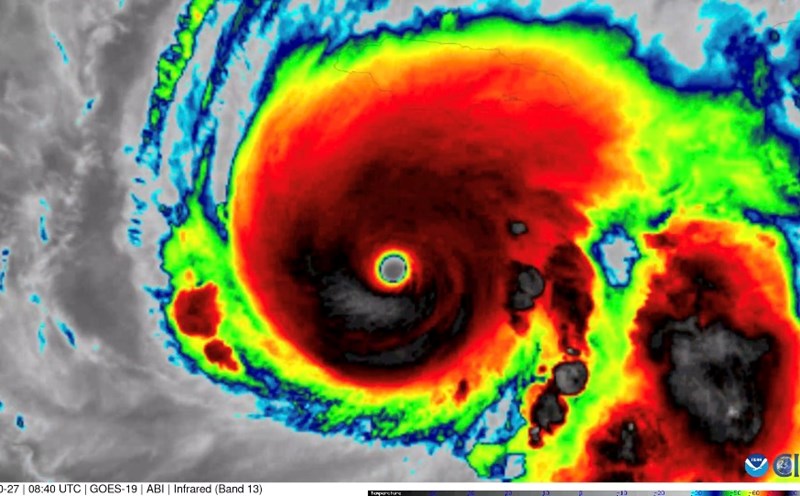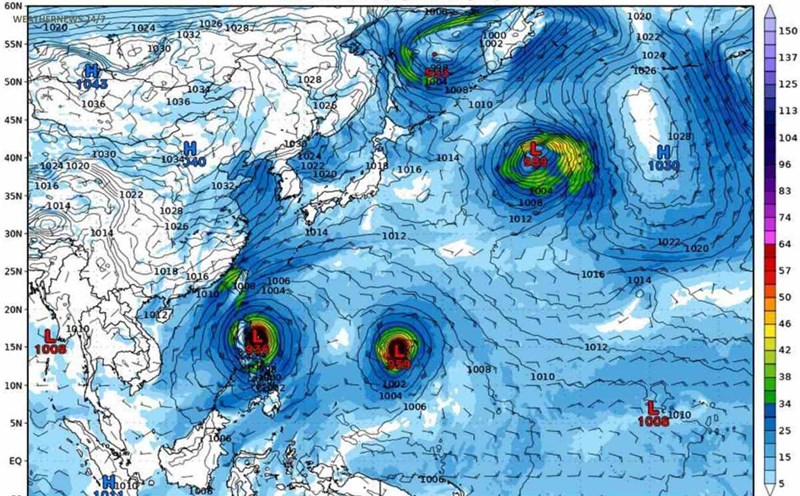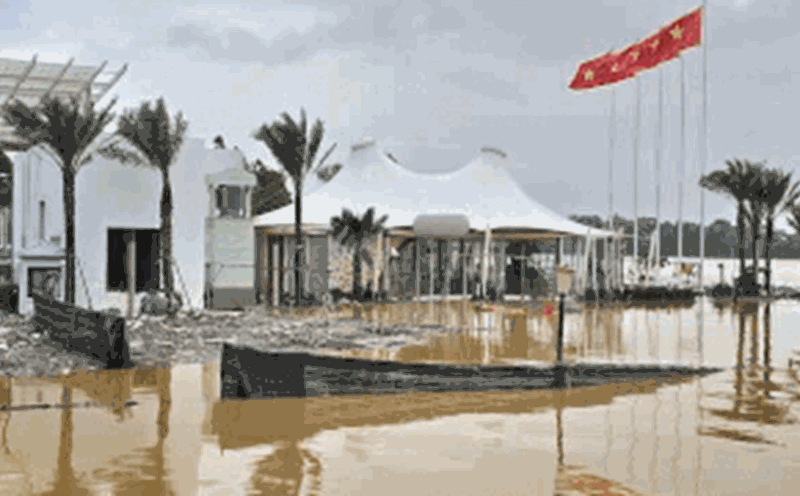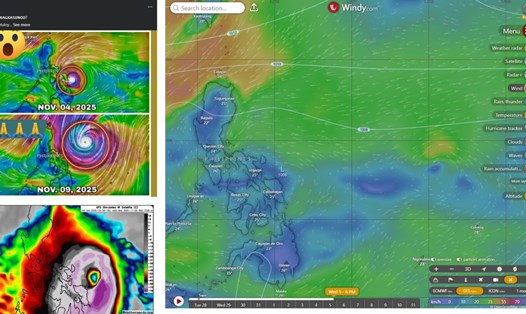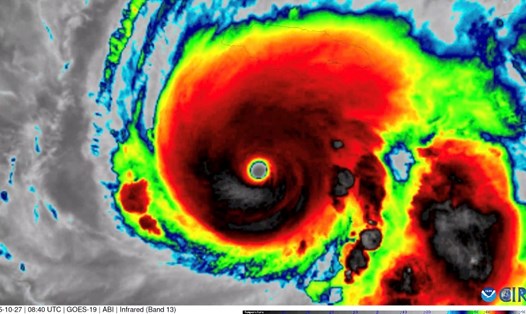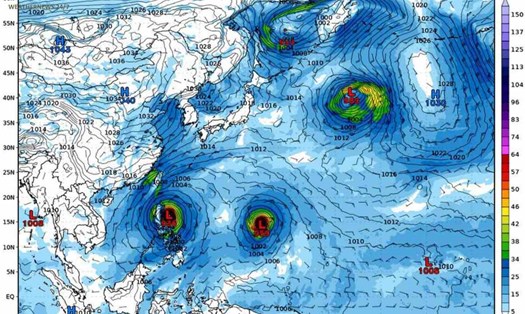The US National Hurricane Center (NHC) warned that super typhoon Melissa could continue to strengthen after the central pressure dropped to a record 901mb, lower than Hurricane Katrina in 2005. Jamaica, Cuba and the Bahamas are in a state of emergency due to the risk of flooding and deadly waves.
The latest NHC hurricane report said that at 2:00 a.m. on October 28 (Eastern ET), super typhoon Melissa maintained maximum sustained winds of about 280 km/h, continuing at level 5 - the highest level on the Saffir-Simpson scale.
However, what makes meteorologists particularly concerned is that the central pressure has dropped from 909 to 901mb, lower than the lowest level of Hurricane Katrina (902mb) - a clear sign that Melissa is strengthening.
Hurricane fighters from the National Oceanic and Atmospheric Administration (NOAA) have continuously flown into the eye area to collect data. Preliminary results show that immediately in the eye of storm Melissa, a new convectionary cycle may be developing, usually signaling the next phase of strengthening.
Although the storm's strong winds could destroy homes and infrastructure, experts warn that new rains are a deadly threat to super typhoon Melissa.
Jamaica is expected to see heavy rainfall of 500-750mm, locally over 1,000mm in the eastern mountainous areas, causing widespread flash floods and landslides.
Cuba and Haiti are also in the affected area with rainfall of 300-600mm, enough to trigger a series of landslides and deep flooding.
Storm surge could reach 4 meters along the southern coast of Jamaica, pushing water deeper inland, isolating many residential areas.
Even as Melissas winds weaken, water remains the biggest threat, the NHC warned.
Superstorm Melissa sets a rare record in Atlantic hurricane history. The storm has maintained a Category 5 status for 24 consecutive hours - a rare record even in the history of Atlantic super typhoons.
There have been two other Category 5 storms, Humberto and Erin, this year, but both have only maintained their peak intensity for less than 12 hours. Last year, Hurricanes Milton and Beryl also reached Category 5 in a much shorter period of time.
That makes Melissa the strongest and most durable storm on the planet to date, with a huge circulation covering nearly the northern half of the Caribbean Sea.
According to the latest storm forecast, center of Shelter will approach or make landfall in Jamaica on the morning of October 29, then enter southeastern Cuba on October 30 and move through the Bahamas on October 31.
Melissa is a harsh reminder that climate change is making super typhoons not only stronger, but more persistent than ever - a NOAA expert commented.

